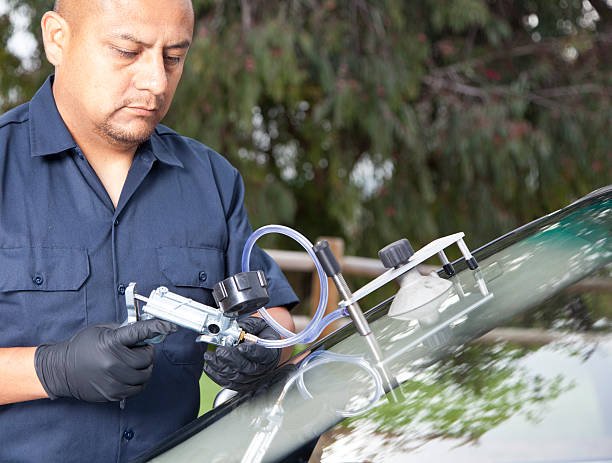Is Hot or Cold Air Better to Clear Windscreen?
Are you tired of dealing with foggy windshields obstructing your visibility on the road? Wondering if hot or cold air is more effective at clearing them? Let’s delve deeper into this age-old debate and explore the intricacies of using hot and cold air methods for defogging windshields.
By examining the advantages and disadvantages of each approach, we aim to provide you with a comprehensive understanding of their effectiveness in different scenarios.
Through this analysis, you'll gain valuable insights to help you make informed decisions and combat foggy windshields with confidence, ensuring clear visibility and safer driving experiences.
Now, when it comes to safeguarding your windshield, it's worth considering windscreen insurance. Whether you opt for hot or cold air methods, having windshield insurance can provide added protection. In case of any damage, such insurance may help cover the costs of repairs or even a replacement, ensuring that you maintain clear visibility on the road.

The Science Behind Air Temperature
When considering the efficiency of windscreen clearing, understanding the role of air temperature is essential.
The temperature of the air outside can greatly impact how quickly and effectively your windscreen is cleared of fog, frost, or ice.
In general, warmer air temperatures are more favorable while clearing windshields and windshield replacement services . This is because warm air has a greater capacity to hold moisture, which helps to evaporate any condensation or frost that has formed on the glass.
Additionally, warm air can also help melt ice or snow that may have accumulated on the windscreen.
On the other hand, cold air temperatures can hinder the clearing process as they reduce the ability of moisture to evaporate and can cause ice to form more quickly.
How Hot Air Affects Windshield Clearing
Hot air plays a crucial role in effectively clearing your windshield. When you turn on the heater in your car, the hot air causes the ice or frost on your windshield to melt rapidly. This is because heat increases the molecular activity of the ice, making it easier to break apart and melt.
The hot air also helps to raise the temperature of the windshield, preventing condensation from forming on its surface. This is essential for maintaining clear visibility while driving.
Additionally, the warm air helps to evaporate any moisture on the windshield, further improving its clarity. So, when it comes to clearing your windshield, hot air is the way to go.
Just make sure not to use excessive heat, as it may cause the glass to crack due to rapid temperature changes.
The Impact of Cold Air on Windshield Defogging
To effectively clear your windshield, using cold air may not be as efficient as using hot air.
While cold air can help to cool down the temperature inside the car and reduce condensation on the windshield, it mightn't be effective in defogging the glass quickly.
Cold air has a lower ability to hold moisture compared to warm air, which means that it may take longer for the cold air to absorb the moisture on the windshield and clear the fog.
Additionally, cold air can also make the glass surface colder, which may lead to further condensation and fogging.
Therefore, when it comes to defogging your windshield, using hot air is generally more effective and efficient.
Pros and Cons of Hot and Cold Air Methods
While both hot and cold air methods have their pros and cons for clearing a windscreen, it's essential to consider the specific advantages and disadvantages of each approach.
The hot air method, typically using the car's heater, can quickly melt ice or frost on the windshield, allowing for faster defrosting. It also helps to warm up the interior of the car, making the driving experience more comfortable.
However, the hot air method may take longer to clear condensation, and it may cause the windshield to fog up temporarily due to the temperature difference between the inside and outside of the car.
On the other hand, the cold air method, using the car's air conditioning or opening windows, can effectively clear condensation without causing fogging. However, it may not be as efficient in melting ice or frost as the hot air method.
Ultimately, the choice between hot and cold air methods depends on the specific weather conditions and personal preferences.
The Verdict: Which Air Temperature Wins?
When it comes to clearing your windscreen, the question of which air temperature wins is a matter of personal preference and specific weather conditions. Both hot and cold air methods have their advantages and disadvantages.
Hot air can quickly melt ice and frost, making it easier to remove. However, it can also cause the glass to expand rapidly, which may lead to glass cracks or chips.
On the other hand, cold air is less likely to damage the windscreen but takes longer to clear the ice.
Additionally, rain can exacerbate issues with a cracked windshield , potentially leading to further damage or impaired visibility. Therefore, when considering defogging methods, it's crucial to prioritize safety and address any windshield damage promptly.
The best option depends on your situation. If you have a heated windscreen or are in a hurry, hot air may be the better choice. If you have the time and want to avoid potential damage, cold air can be a safer option.
So, after considering the science behind air temperature and its impact on clearing windshields, it's clear that hot air is more effective in defogging and removing condensation.
While cold air can help in certain situations, hot air provides quicker and more efficient results.
However, it's important to note that excessive heat can potentially damage the windshield. Therefore, it's best to use hot air in moderation and take precautions to protect the windshield.
